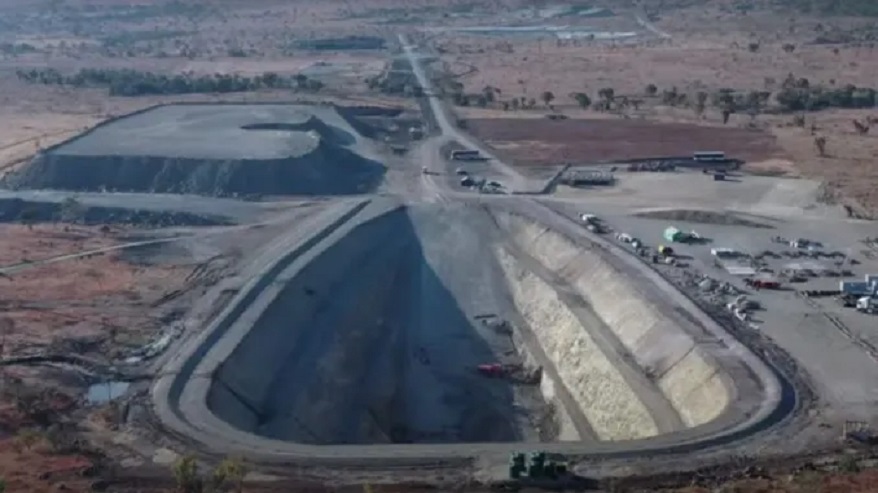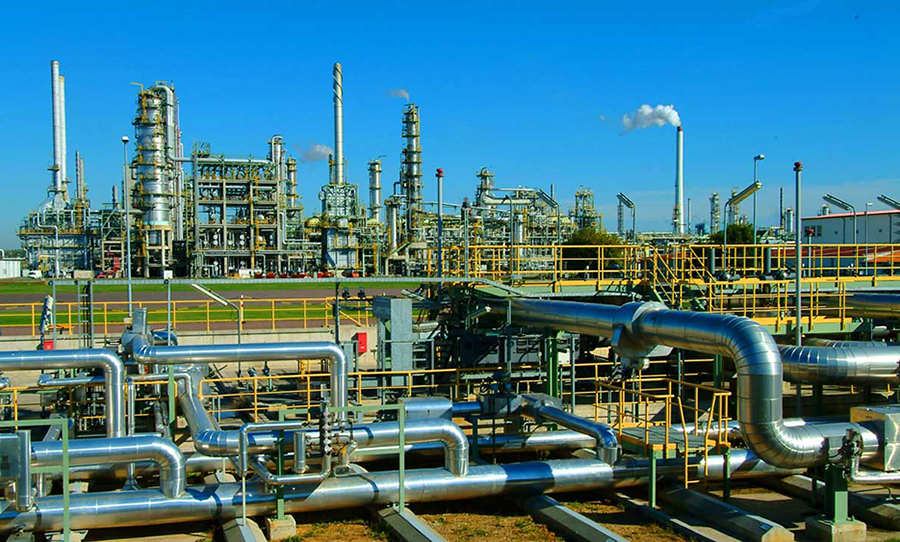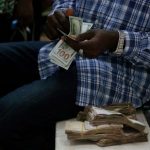World
Russia Abandons Zimbabwe’s Great Dyke Platinum Project

By Kestér Kenn Klomegâh
The lucrative $3 billion Great Dyke Platinum project contract signed in September 2014 between Russia and Zimbabwe has been abandoned by the former, several reports monitored this week confirmed.
Works are currently not going on in the platinum mine located about 50 km northwest of Harare, the Zimbabwean capital and the reasons for the abrupt termination of the bilateral contract have still not been made public.
However, Zimbabwe’s Centre for Natural Resource Governance pointed to a lack of capital for the project, so the site has been abandoned since early 2021.
It irreversibly brings to an end 16 years of Russian involvement with the project, taken away from South Africa’s Impala Platinum Holdings Limited in 2006 by the government of former Zimbabwean President Robert Mugabe and was on a silver platter given to Russian investors due to long diplomatic relations.
Foreign Minister Sergey Lavrov launched the $3 billion Russian project back in 2014, after years of negotiations, with the hope of raising its economic profile in Zimbabwe.
The project, where production is projected to peak at 800,000 ounces yearly, involves a consortium consisting of the Rostekhnologii State Corporation, Vneshekonombank and Vi Holding in a joint venture with some private Zimbabwe investors as well as the Zimbabwean government.
Most officials oftentimes speak about Russia and Zimbabwe having had good and time-tested relations from the Soviet days, supported Robert Mugabe and his ZANU-PF against the West.
Since the collapse of the Soviet era, Russia still maintains close political relations but its economic engagement has staggered. Russia has attempted to raise its economic profile, the latest considered an important milestone was in September 2014 when Russia declared interest in the development of platinum deposits in Darwendale.
Bloomberg News Agency report on June 3 was about the complicated ownership of Darwendale. It says output was initially expected to begin in 2021, but Russian links and a lack of capital aren’t the only things that have delayed the project.
Zimbabwean government says it controls Kuvimba. But its assets, including the stake in Great Dyke, are the same as those owned until at least late 2020 by Sotic International Ltd., a company linked to Kudakwashe Tagwirei, an adviser to Zimbabwean President Emmerson Mnangagwa who is sanctioned by the United States and the United Kingdom over corruption allegations.
The government hasn’t said how it acquired the assets or disclosed the identities of the private shareholders who own the 35% of Kuvimba not held by the state. Impala rebuffed an approach from Great Dyke because it was concerned about its ownership, people familiar with the situation said in February.
That opacity of its ownership has also complicated relations between Great Dyke’s shareholders. The project has also been stymied by “mismanagement and mistrust,” the Centre for Natural Resource Governances said in its report. “Mining operations have since stopped as the Russian investor has stopped pumping money into the project,” it said.
According to Bloomberg, the Darwendale has been tied to Russia since 2006, when former Zimbabwe president, Robert Mugabe, took the concession from a local unit of South Africa’s Impala Platinum Holdings Ltd. and handed it to Russian investors. The first venture to try and tap the deposit was named Ruschrome Mining – it included a state-owned mining company, the Zimbabwe Mining Development Corp., Russian defence conglomerate Rostec, Vnesheconombank and Vi Holding.
The venture later became Great Dyke, named after the geological feature where the deposit is found, and Vi Holding remained the sole investor from Russia. Vi Holding owner Vitaliy Machitskiy, who was born in Irkutsk in Siberia, is a childhood friend of Sergey Chemezov, chief executive of Rostec, according to Forbes. Maschitskiy was on the board of several Rostec’s units, while Chemezov himself is a close ally of President Vladimir Putin, with whom he once worked in Germany. Chemezov is sanctioned by the United States, European Union and the United Kingdom.
The Darwendale project was not tendered, according to available information from government website sources both in Russia and Zimbabwe. With its cordial relations, Russia was simply offered the lucrative mining concession without participating in any tender. After the project launch, Brigadier General Mike Nicholas Sango, Zimbabwe’s Ambassador to the Russian Federation, wrote me an email that “Russia’s biggest economic commitment to Zimbabwe to date was its agreement in September 2014 to invest US$3 billion in what is Zimbabwe’s largest platinum mine.”
“What will set this investment apart from those that have been in Zimbabwe for decades is that the project will see the installation of a refinery to add value, thereby creating more employment and secondary industries,” Brigadier General Sango explained.
“We are confident that this is just the start of a renewed Russian-Zimbabwean economic partnership that will blossom in coming years. Our two countries are discussing other mining deals in addition to energy, agriculture, manufacturing and industrial projects,” Ambassador Sango added.
Later, there was another landmark in the bilateral relationship. The groundwork was laid for expanding trade and investment when Zimbabwean President Robert Mugabe met President Vladimir Putin in Moscow in May 2015. Unexpectedly, political developments ushered in a new era with the emergence of a new leader in Zimbabwe. Russia reaffirmed its commitment to work with the new leadership.
In early March 2018, during his official visit to Harare, Sergey Lavrov was received by President Emmerson Mnangagwa. Lavrov had an in-depth meeting with Vice-President Constantino Chiwenga and later held talks with Minister of Foreign Affairs and International Trade Sibusiso Busi Moyo.
They acknowledged the fact that the two countries are interested in promoting partnership in geological exploration and production of minerals. They all listed significant spheres for possible cooperation and considered the platinum deposit as the driving force in the entire range of trade, economic and investment ties.
“The Republic of Zimbabwe Minister of Foreign Affairs and International Trade, Sibusiso Busi Moyo, and I have reviewed contacts in the context of relations between Russia and Zimbabwe. We have focused on a project for the integrated development of the Darwendale platinum group metals deposit, one of the largest in the world, where Russia and Zimbabwe operate a joint venture,” Lavrov said.
According to Lavrov, Russia and Zimbabwe maintain very strong mutual sympathies and friendly feelings, and this ensures a very trustful and effective political dialogue, including top-level dialogue. But now, it is necessary to elevate trade, economic and investment relations to a level that would meet political and trust-based relations.
Understandably, there has always been keen competition among foreign investors for the mining projects there. In March, the same month when Sergey Lavrov visited Harare, a Cypriot investor signed a $4.2 billion deal to develop a platinum mine and build a refinery in Zimbabwe, an investment that President Emmerson Mnangagwa explained that it showed his country was open for business.
Signing the agreement with Cyprus-based Karo Resources, Mines Minister Winston Chitando, said work would start in July, with the first output of platinum group metals expected in 2020, aiming to reach 1.4 million ounces annually within three years, that is 2023.
As far back as November 2018, President Emmerson Mnangagwa said his government would soon open up the platinum sector to all interested foreign investors. Zimbabwe has the world’s second-largest platinum reserves after South Africa. His government policy would guide the sector on such issues as exploration, ownership, mining, processing and selling.
Mnangagwa has been committed to opening up Zimbabwe’s economy to the rest of the world in order to attract the much-needed foreign direct investment to revive the ailing economy, and make maximum use of the opportunities for bolstering and implementing a number of large projects in the country. That Zimbabwe would undergo a “painful” reform process to achieve transformation and modernisation of the economy.
AFP reported that international funds are still blocked – Zimbabwe must clear its arrears before it could raise more loans needed to rebuild the country. With a total debt of $16.9 billion, it says it will clear almost $2 billion of arrears with the African Development Bank and the World Bank by October 2019.
Zimbabwe has various sectors besides mining. There is the possibility of greater participation of Russian economic operators in the development processes in Zimbabwe, and southern Africa. But Russians need a new approach to working with Africa, and first, have to move away from too much rhetoric to concrete economic engagement over the next years. Diplomatic relations between Zimbabwe and Russia already marked their 40th year.
Zimbabwe, a landlocked country in southern Africa, shares a 200-kilometre border on the south with South Africa, bounded on the southwest and west by Botswana, on the north by Zambia and on the northeast and east by Mozambique. Zimbabwe is a member of the Southern African Development Community (SADC).
World
Russian-Nigerian Economic Diplomacy: Ajeokuta Symbolises Russia’s Remarkable Achievement in Nigeria

By Kestér Kenn Klomegâh
Over the past two decades, Russia’s economic influence in Africa—and specifically in Nigeria—has been limited, largely due to a lack of structured financial support from Russian policy banks and state-backed investment mechanisms. While Russian companies have demonstrated readiness to invest and compete with global players, they consistently cite insufficient government financial guarantees as a key constraint.
Unlike China, India, Japan, and the United States—which have provided billions in concessionary loans and credit lines to support African infrastructure, agriculture, manufacturing, and SMEs—Russia has struggled to translate diplomatic goodwill into substantial economic projects. For example, Nigeria’s trade with Russia accounts for barely 1% of total trade volume, while China and the U.S. dominate at over 15% and 10% respectively in the last decade. This disparity highlights the challenges Russia faces in converting agreements into actionable investment.
Lessons from Nigeria’s Past
The limited impact of Russian economic diplomacy echoes Nigeria’s own history of unfulfilled agreements during former President Olusegun Obasanjo’s administration. Over the past 20 years, ambitious energy, transport, and industrial initiatives signed with foreign partners—including Russia—often stalled or produced minimal results. In many cases, projects were approved in principle, but funding shortfalls, bureaucratic hurdles, and weak follow-through left them unimplemented. Nothing monumental emerged from these agreements, underscoring the importance of financial backing and sustained commitment.
China as a Model
Policy experts point to China’s systematic approach to African investments as a blueprint for Russia. Chinese state policy banks underwrite projects, de-risk investments, and provide finance often secured by African sovereign guarantees. This approach has enabled Chinese companies to execute large-scale infrastructure efficiently, expanding their presence across sectors while simultaneously investing in human capital.
Egyptian Professor Mohamed Chtatou at the International University of Rabat and Mohammed V University in Rabat, Morocco, argues: “Russia could replicate such mechanisms to ensure companies operate with financial backing and risk mitigation, rather than relying solely on bilateral agreements or political connections.”
Russia’s Current Footprint in Africa
Russia’s economic engagement in Africa is heavily tied to natural resources and military equipment. In Zimbabwe, platinum rights and diamond projects were exchanged for fuel or fighter jets. Nearly half of Russian arms exports to Africa are concentrated in countries like Nigeria, Zimbabwe, and Mozambique. Large-scale initiatives, such as the planned $10 billion nuclear plant in Zambia, have stalled due to a lack of Russian financial commitment, despite completed feasibility studies. Similar delays have affected nuclear projects in South Africa, Rwanda, and Egypt.
Federation Council Chairperson Valentina Matviyenko and Senator Igor Morozov have emphasized parliamentary diplomacy and the creation of new financial instruments, such as investment funds under the Russian Export Center, to provide structured support for businesses and enhance trade cooperation. These measures are designed to address historical gaps in financing and ensure that agreements lead to tangible outcomes.
Opportunities and Challenges
Analysts highlight a fundamental challenge: Russia’s limited incentives in Africa. While China invests to secure resources and export markets, Russia lacks comparable commercial drivers. Russian companies possess technological and industrial capabilities, but without sufficient financial support, large-scale projects remain aspirational rather than executable.
The historic Russia-Africa Summits in Sochi and in St. Petersburg explicitly indicate a renewed push to deepen engagement, particularly in the economic sectors. President Vladimir Putin has set a goal to raise Russia-Africa trade from $20 billion to $40 billion over the next few years. However, compared to Asian, European, and American investors, Russia still lags significantly. UNCTAD data shows that the top investors in Africa are the Netherlands, France, the UK, the United States, and China—countries that combine capital support with strategic deployment.
In Nigeria, agreements with Russian firms over energy and industrial projects have yielded little measurable progress. Over 20 years, major deals signed during Obasanjo’s administration and renewed under subsequent governments often stalled at the financing stage. The lesson is clear: political agreements alone are insufficient without structured investment and follow-through.
Strategic Recommendations
For Russia to expand its economic influence in Africa, analysts recommend:
- Structured financial support: Establishing state-backed credit lines, policy bank guarantees, and investment funds to reduce project risks.
- Incentive realignment: Identifying sectors where Russian expertise aligns with African needs, including energy, industrial technology, and infrastructure.
- Sustained implementation: Turning signed agreements into tangible projects with clear timelines and milestones, avoiding the pitfalls of unfulfilled past agreements.
With proper financial backing, Russia can leverage its technological capabilities to diversify beyond arms sales and resource-linked deals, enhancing trade, industrial, and technological cooperation across Africa.
Conclusion
Russia’s Africa strategy remains a work in progress. Nigeria’s experience with decades of agreements that failed to materialize underscores the importance of structured financial commitments and persistent follow-through. Without these, Russia risks remaining a peripheral player (virtual investor) while Arab States such as UAE, China, the United States, and other global powers consolidate their presence.
The potential is evident: Africa is a fast-growing market with vast natural resources, infrastructure needs, and a young, ambitious population. Russia’s challenge—and opportunity—is to match diplomatic efforts with financial strategy, turning political ties into lasting economic influence.
World
Afreximbank Warns African Governments On Deep Split in Global Commodities

By Adedapo Adesanya
Africa Export-Import Bank (Afreximbank) has urged African governments to lean into structural tailwinds, warning that the global commodity landscape has entered a new phase of deepening split.
In its November 2025 commodity bulletin, the bank noted that markets are no longer moving in unison; instead, some are powered by structural demand while others are weakening under oversupply, shifting consumption patterns and weather-related dynamics.
As a result of this bifurcation, the Cairo-based lender tasked policymakers on the continent to manage supply-chain vulnerabilities and diversify beyond the commodity-export model.
The report highlights that commodities linked to energy transition, infrastructure development and geopolitical realignments are gaining momentum.
For instance, natural gas has risen sharply from 2024 levels, supported by colder-season heating needs, export disruptions around the Red Sea and tightening global supply. Lithium continues to surge on strong demand from electric-vehicle and battery-storage sectors, with growth projections of up to 45 per cent in 2026. Aluminium is approaching multi-year highs amid strong construction and automotive activity and smelter-level power constraints, while soybeans are benefiting from sustained Chinese purchases and adverse weather concerns in South America.
Even crude oil, which accounts for Nigeria’s highest foreign exchange earnings, though still lower year-on-year, is stabilising around $60 per barrel as geopolitical supply risks, including drone attacks on Russian facilities, offset muted global demand.
In contrast, several commodities that recently experienced strong rallies are now softening.
The bank noted that cocoa prices are retreating from record highs as West African crop prospects improve and inventories recover. Palm oil markets face oversupply in Southeast Asia and subdued demand from India and China, pushing stocks to multi-year highs. Sugar is weakening under expectations of a nearly two-million-tonne global surplus for the 2025/26 season, while platinum and silver are seeing headwinds from weaker industrial demand, investor profit-taking and hawkish monetary signals.
For Africa, the bank stresses that the implications are clear. Countries aligned with energy-transition metals and infrastructure-linked commodities stand to benefit from more resilient long-term demand.
It urged those heavily exposed to softening agricultural markets to accelerate a shift into processing, value addition and product diversification.
The bulletin also called for stronger market-intelligence systems, improved intra-African trade connectivity, and investment in logistics and regulatory capacity, noting that Africa’s competitiveness will depend on how quickly governments adapt to the new two-speed global environment.
World
Aduna, Comviva to Accelerate Network APIs Monetization

By Modupe Gbadeyanka
A strategic partnership designed to accelerate worldwide enterprise adoption and monetisation of Network APIs has been entered into between Comviva and the global aggregator of standardised network APIs, Aduna.
The adoption would be done through Comviva’s flagship SaaS-based platform for programmable communications and network intelligence, NGAGE.ai.
The partnership combines Comviva’s NGAGE.ai platform and enterprise onboarding expertise with Aduna’s global operator consortium.
This unified approach provides enterprises with secure, scalable access to network intelligence while enabling telcos to monetise network capabilities efficiently.
The collaboration is further strengthened by Comviva’s proven leadership in the global digital payments and digital lending ecosystem— sectors that will be among the biggest adopters of Network APIs.
The NGAGE.ai platform is already active across 40+ countries, integrated with 100+ operators, and processing over 250 billion transactions annually for more than 7,000 enterprise customers. With its extensive global deployment, NGAGE.ai is positioned as one of the most scalable and trusted platforms for API-led network intelligence adoption.
“As enterprises accelerate their shift toward real-time, intelligence-driven operations, Network APIs will become foundational to digital transformation. With NGAGE.ai and Aduna’s global ecosystem, we are creating a unified and scalable pathway for enterprises to adopt programmable communications at speed and at scale.
“This partnership strengthens our commitment to helping telcos monetise network intelligence while enabling enterprises to build differentiated, secure, and future-ready digital experiences,” the chief executive of Comviva, Mr Rajesh Chandiramani, stated.
Also, the chief executive of Aduna, Mr Anthony Bartolo, noted that, “The next wave of enterprise innovation will be powered by seamless access to network intelligence.
“By integrating Comviva’s NGAGE.ai platform with Aduna’s global federation of operators, we are enabling enterprises to innovate consistently across markets with standardised, high-performance Network APIs.
“This collaboration enhances the value chain for operators and gives enterprises the confidence and agility needed to launch new services, reduce fraud, and deliver more trustworthy customer experiences worldwide.”
-

 Feature/OPED6 years ago
Feature/OPED6 years agoDavos was Different this year
-
Travel/Tourism9 years ago
Lagos Seals Western Lodge Hotel In Ikorodu
-

 Showbiz3 years ago
Showbiz3 years agoEstranged Lover Releases Videos of Empress Njamah Bathing
-

 Banking7 years ago
Banking7 years agoSort Codes of GTBank Branches in Nigeria
-

 Economy3 years ago
Economy3 years agoSubsidy Removal: CNG at N130 Per Litre Cheaper Than Petrol—IPMAN
-

 Banking3 years ago
Banking3 years agoFirst Bank Announces Planned Downtime
-

 Banking3 years ago
Banking3 years agoSort Codes of UBA Branches in Nigeria
-

 Sports3 years ago
Sports3 years agoHighest Paid Nigerian Footballer – How Much Do Nigerian Footballers Earn











